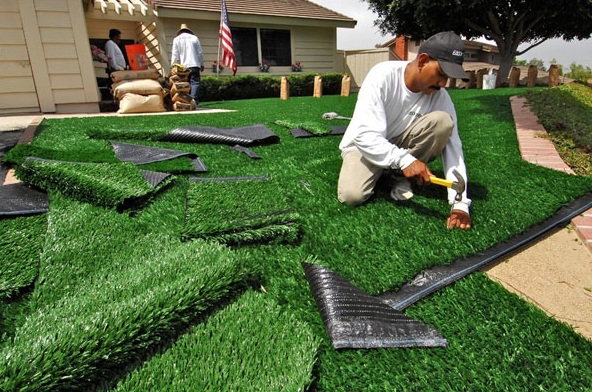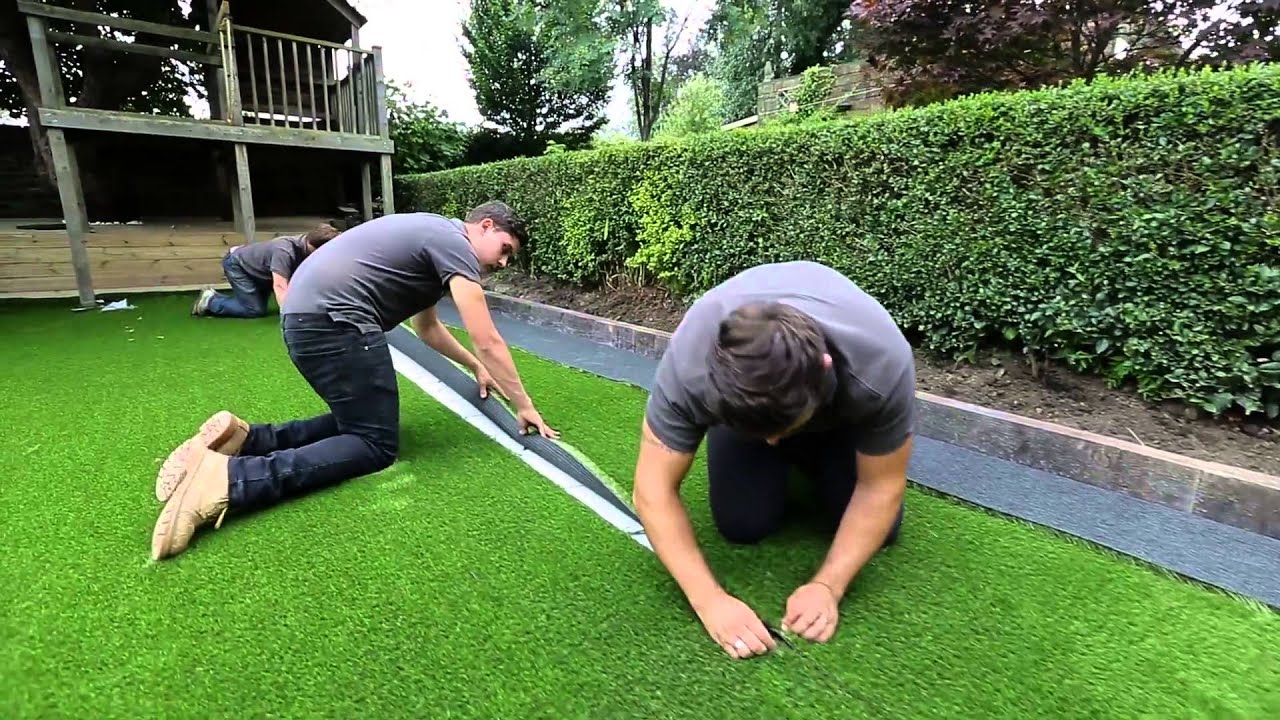Expert Arizona Turf Installation Solutions for Residential and Commercial Use
Look Into the Environmental Perks of Opting for Synthetic Grass Solutions
The adoption of man-made lawn solutions provides an engaging chance to attend to pushing environmental difficulties. By substantially lowering water use and reducing the application of unsafe chemicals, these alternatives not only advertise sustainable landscaping but likewise safeguard regional communities.
Water Conservation Conveniences
One of one of the most substantial advantages of synthetic grass is its ability to conserve water. Traditional grass lawns need considerable irrigation, especially in locations prone to drought or water constraints. On the other hand, synthetic grass does not need watering, considerably decreasing the overall demand for water resources. This attribute is specifically helpful in dry areas where water shortage is a pressing problem.
By removing the need for normal watering, synthetic grass adds to lasting landscape methods and aids reduce the environmental effect of too much water consumption. In addition, the preservation of water reaches the decrease of runoff, which can cause dirt erosion and river pollution.
Furthermore, the installation of synthetic grass allows towns and home owners to allocate water resources much more efficiently, concentrating on necessary usages such as alcohol consumption water and farming. The shift towards synthetic grass not just promotes responsible water usage however likewise lines up with more comprehensive environmental goals aimed at protecting natural deposits.
As areas increasingly prioritize sustainability, the water conservation advantages of synthetic grass provide an engaging situation for its adoption in business and property landscaping jobs.
Minimized Chemical Use
The shift to synthetic grass considerably reduces the reliance on chemical therapies frequently made use of in all-natural lawn maintenance. Standard lawn monitoring typically entails the application of herbicides, chemicals, and plant foods to promote growth and control bugs. These chemicals can position risks to human wellness, local wild animals, and the setting, adding to soil and water contamination.
On the other hand, synthetic grass removes the requirement for these dangerous compounds. As soon as set up, it needs minimal maintenance, mainly consisting of regular cleansing and occasional infill replenishment. This reduction in chemical use not only profits the instant environment yet also adds to broader eco-friendly stability. By decreasing the release of synthetic substances into the ecological community, man-made turf advertises healthier dirt and water systems.
Additionally, the absence of chemical drainage associated with man-made lawn setups helps secure neighborhood waterways from contamination, sustaining water life and preserving biodiversity. Arizona turf. As communities progressively prioritize sustainable methods, choosing synthetic grass presents a practical option that straightens with ecological conservation goals. With this change, homeowner can delight in lush eco-friendly areas without jeopardizing environmental health and wellness, leading the way for an extra lasting future
Reduced Carbon Footprint

Furthermore, the installation of synthetic grass can lead to significant water conservation. Natural lawns require considerable quantities of check it out water for watering, which not just contributes to the carbon impact related to water extraction and therapy however likewise stress neighborhood water sources. On the other hand, synthetic grass needs minimal upkeep, needing no watering, consequently dramatically lowering water use and its associated energy costs.
Additionally, the longevity of artificial turf adds to its decreased carbon impact. With a lifespan of up to 15 years or more, the demand for constant replacements is diminished, resulting in much less waste and reduced energy consumption in manufacturing and throwing click over here away traditional lawn choices. Generally, man-made lawn provides a lasting choice for environmentally conscious landscape design.
Habitat Conservation
Habitat preservation is an essential factor to consider in the argument over landscaping selections, especially when comparing synthetic grass to natural yard. Natural grass yards typically need extensive upkeep, including using herbicides, pesticides, and plant foods, which can detrimentally affect local ecosystems. These chemicals can leach right into the soil and rivers, hurting native plants and animals and disrupting regional habitats.
Artificial lawn gets rid of the demand for unsafe chemicals, thereby protecting close-by wildlife and maintaining the integrity of surrounding environments. The installment of artificial lawn can lead to the conversion of previous lawn locations right into even more biodiverse landscapes, such as pollinator gardens or native plant areas, which can sustain neighborhood wild animals.
Inevitably, the shift to synthetic grass not just preserves water and minimizes maintenance initiatives yet also fosters an extra harmonious relationship between human tasks and the natural atmosphere, promoting environment conservation at the same time.
Long-Term Sustainability
Long-lasting sustainability is a vital consider assessing the advantages of synthetic grass over standard turf lawns. Among the most considerable benefits of synthetic grass is its sturdiness; it can last up to 15-20 years with very little upkeep, whereas all-natural lawn requires constant reseeding and replacement. This long life decreases the need for continuous resources, such as water, plant foods, and chemicals, which are vital for maintaining a healthy and balanced grass lawn.
Additionally, synthetic grass adds to a reduction in carbon exhausts related to lawn treatment equipment. Standard lawns often call for gas-powered mowers, trimmers, and blowers, every one of which add to air contamination. Phoenix turf companies. In comparison, synthetic lawn eliminates the demand for such devices, advertising a cleaner environment
Additionally, the manufacturing of synthetic grass progressively makes use of recycled products, enhancing its sustainability profile. As suppliers embrace eco-friendly methods, the ecological impact of artificial lawn remains to diminish.

Final Thought
The adoption of synthetic grass solutions offers considerable environmental advantages, consisting of substantial water preservation, decreased dependence on dangerous chemicals, and a lower carbon impact. Fabricated lawn help in preserving natural environments by reducing land disturbance and advertising lasting sustainability through the usage of sturdy materials. Jointly, these elements highlight the possibility of synthetic grass to add favorably to ecological health and use a sensible alternative to standard landscaping practices in a significantly resource-conscious globe.
In contrast, artificial grass does not require watering, considerably minimizing the total need for water sources. By decreasing the launch of synthetic compounds right into the ecosystem, man-made lawn advertises healthier dirt and water systems.
Furthermore, the installation of fabricated lawn can result in significant water conservation. In contrast, synthetic turf needs minimal upkeep, calling for no watering, therefore significantly reducing water usage and its associated energy costs.